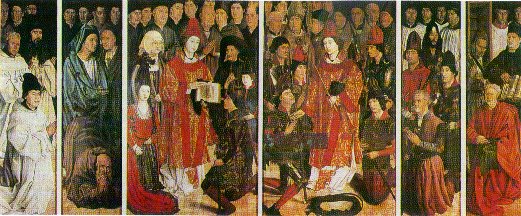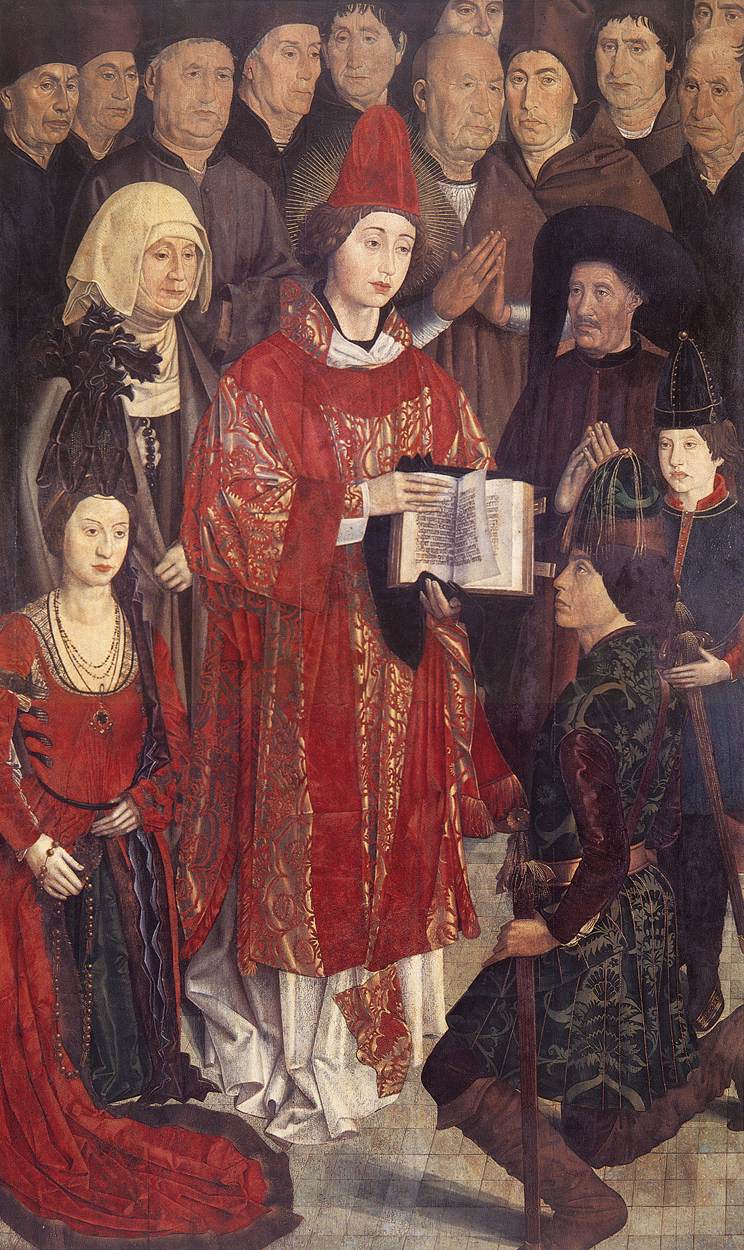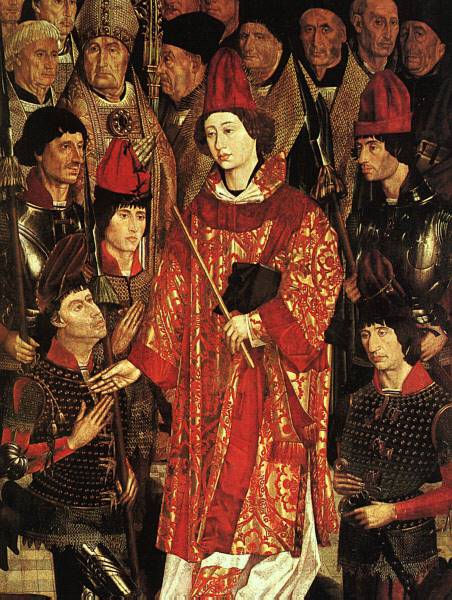The St. Vincent Panels

The Friars' Panel (Painel dos Frades)

As it can easily be noticed, there is not one single Nordic individual represented.
Notice the wide Mediterranean/Alpine noses and the dark brown hair in most men.
The friars spent most of their time enclosured in the monasteries, which meant that their skin would be lighter than that of the ordinary outdoor worker. Still, only one out of six has a pale complexion.
Maybe two of those friars represented are Alpine or at least Alpinized to some extent. Most are, of course, of Iberian Mediterranean stock.
The Fishermen's Panel (Painel dos Pescadores)

For the first time, we can see one blond (possibly white haired) individual. This blond fisherman is brachicephal (which is unfortunate to Arthur Kemp, since it discards the fisherman as a Nordic).He looks completely Iberian.
The fisherman to his left could indeed be of a somewhat mixed Nordic stock.
As usual, most of the individuals represented are of Iberian Mediterranean stock (the second man to the left looks Alpine).
Rounded noses without continuity with the forehead, dark hair, medium sized foreheads, gracile facial features can all be easily detected.
Except for the individual in green which is somewhat of a rare type in southern Portugal, all these men could be found anywhere in the country, both in the extreme north or in extreme south.
The Prince's Panel (Painel do Infante)

On the centre of this panel we can observe St. Vincent, the patron saint of Lisbon, holding the book of the Gospels (St. John's gospel), addressing a kneeling man that is recognised by scholars as the portuguese king D. Afonso V. This panel can be seen as the oath of the royal family.
Wearing a black hat (with some pending cloth), standing in a position of prayer, one can see Prince Henry the Navigator. Prince Henry, man of a somewhat dark skin complexion, was obviously an individual of Mediterranean stock. Prince Henry was half English, but not even that was enough to reduce his obvious Iberian looks.
On this panel, representative of the royal family and the higher nobility, not even one single individual is of Nordic racial stock. There are 3 or 4 Iberian Alpines and the rest are mostly Iberian Mediterraneans.
It should also be noted that only three individuals (including the saint) have a pale skin complexion. That is not an oddity in modern Portugal. Many individuals are relatively pale skinned, both in the north and in the extreme south.
The Archbishop's Panel (Painel do Arcebispo)

The individual kneeling only on one knee has been recognised by scholars as Prince D. Fernando (the brother of the king D. Afonso V). This royal prince is once more, a good example of an Iberian Mediterranean.
Once again not even one of the represented individuals is of Nordic racial stock. In fact, in this particular panel, not even one single individual has a pale complexion.
This panel represents both the nobility and the clergy (upper classes).
The Knights' Panel (Painel dos Cavaleiros)

Like in the previous panels, the nobility and the clergy are well represented.
For the second time we are able to recognise a blond (?) figure. Unfortunately for Arthur Kemp, he is once again a brachicephal (mostly Alpine Iberian).
The nobleman in green (right) looks completely Iberian (like all of them, really) and he has black hair.
The knight with the helmet has been identified as a Moorish warrior (arguable).
The Relic's Panel (Painel da Reliquia)

In the centre, one can watch a Jew presenting a Hebrew Bible to the viewer.
Once again, not one single Nordic individual. This shouldn't be a surprise to anyone of reason.
Interestingly, anyone that has visited Portugal, can even nowadays see that faces like the ones shown in the six panels can be easily found throughout modern day Portugal.
The argument that these Portuguese were already highly mixed can't therefore be used.
The descendants of these men that are no different than the modern day Portuguese males were the ones that conquered the largest South American country (Brazil), the ones that built the largest trading empire the world has ever known in only 20 years, and the ones that mapped 2/3 of the Earth's oceans.
The modern Portuguese - and only them - can claim their past glory, their heritage and the deeds of their ancestors.
White supremacists should therefore stop using Portugal as a part of their agenda intended to raise their self-esteem in taking pride in something that has nothing to do with their own ancestors.